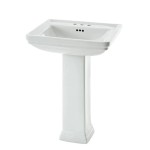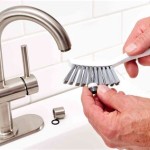Bathroom Towel Rack Build
Bathroom towel racks contribute significantly to both the functionality and aesthetics of a bathroom. A well-chosen and properly installed rack keeps towels dry, readily accessible, and contributes to an organized, visually appealing space. Building a custom towel rack offers the opportunity to tailor the design and dimensions precisely to individual bathroom needs and personal style preferences.
Several material options exist for building a bathroom towel rack. Wood offers a classic, warm aesthetic and can be easily worked with using standard woodworking tools. Popular choices include hardwoods like oak, maple, and cherry for their durability and resistance to moisture. Softwoods like pine and cedar are less expensive but may require more frequent sealing or painting to protect against bathroom humidity. Metal, particularly stainless steel, provides a sleek, modern look and offers excellent water resistance. Industrial pipe fittings can be utilized to create unique, visually interesting towel racks. Reclaimed materials, such as repurposed wood or metal, present an eco-friendly option and can add a distinct character to the bathroom.
Before initiating the build, careful planning is essential. Accurate measurements of the available wall space are crucial to ensure the rack fits comfortably and allows sufficient clearance for towel hanging. The number of towels the rack needs to accommodate should be determined to inform the rack's length and the spacing between bars or hooks. Sketching a design on paper helps visualize the finished product and allows for adjustments before cutting any materials. Consider the bathroom's existing décor and fixtures when selecting the material and style of the towel rack to ensure a cohesive look.
The necessary tools vary depending on the chosen material. Woodworking projects require tools like a saw, drill, sandpaper, screws, and wood glue. Metal projects may necessitate a metal saw, drill, metal files, and appropriate fasteners. Safety equipment, including safety glasses and gloves, are essential regardless of the material. Having all necessary tools and materials assembled before beginning the build streamlines the process and prevents interruptions.
Construction begins with cutting the chosen material to the predetermined dimensions. For wooden racks, this involves sawing the wood to the desired length and width for the frame and the individual towel bars. Metal racks require cutting pipes or bars to size. Accuracy in cutting is paramount to ensure a professional-looking finished product. Sanding wooden components smooths rough edges and prepares the surfaces for finishing.
Assembly methods differ based on material and design. Wooden towel racks are typically assembled using wood glue and screws, ensuring strong joints capable of supporting the weight of wet towels. Metal racks might involve threading pipes together or using brackets and screws for mounting. Careful attention to detail during assembly is crucial to ensure structural integrity and stability. Pre-drilling holes before screwing prevents wood from splitting and simplifies the assembly process.
Finishing touches enhance the appearance and longevity of the bathroom towel rack. Wood racks benefit from staining or painting to protect the wood from moisture and match the bathroom décor. Sealants provide additional protection against humidity. Metal racks can be treated with a protective coating to prevent rust and corrosion. Allow ample drying time for any finishes before installing the rack.
Proper installation ensures the towel rack remains securely attached to the wall and can support the weight of towels. Wall anchors are recommended, especially for heavier racks, to provide a stable mounting point. Using a level ensures the rack hangs straight. Mark the desired location on the wall and pre-drill holes for the mounting hardware. Carefully attach the rack to the wall, ensuring all screws are tightly fastened.
Maintenance procedures vary depending on the material. Wood racks benefit from occasional cleaning with a damp cloth and reapplication of sealant as needed. Metal racks require regular cleaning to remove water spots and prevent rust. Promptly addressing any signs of wear or damage helps maintain the rack's functionality and appearance over time.
Variations in bathroom towel rack designs offer numerous options for customizing the build. A ladder-style towel rack provides multiple rungs for hanging several towels. A freestanding towel rack offers flexibility in placement and eliminates the need for wall mounting. Incorporating shelves or hooks into the design adds additional storage space for toiletries or other bathroom essentials. A swivel towel rack allows for adjustable positioning of the towels.
Considering specific bathroom needs and preferences is essential when choosing a towel rack design. Limited space might necessitate a compact, wall-mounted design. A larger bathroom can accommodate a freestanding or ladder-style rack. The number of individuals using the bathroom influences the required towel capacity. Personal style preferences dictate the choice of materials and finishes.
Building a custom bathroom towel rack involves careful consideration of materials, design, and installation methods. A well-planned and executed project results in a functional and aesthetically pleasing addition to the bathroom.

20 Genius Diy Towel Rack Ideas The Handyman S Daughter

Scrap Wood Towel Rack 3 Easy Steps To Build Your Own

Super Cute Diy Towel Holder Shanty 2 Chic

Diy Wood And Leather Towel Shelf

Scrap Wood Towel Rack 3 Easy Steps To Build Your Own

Farmhouse Style Diy Towel Rack Angela Marie Made

Diy Towel Holder For Gym Modern Hand Rack Under 20 Never Skip Brunch By Cara Newhart

Farmhouse Style Diy Towel Rack Using Scrap Wood Her Happy Home

14 Practical Diy Towel Rack Ideas For Your Bathroom

10 Diy Towel Rack Ideas For Your Spa Bathroom The Family Handyman
Related Posts







